I have just had the most amazing week!
After months of planning, preparation, growing, nurturing, fretting and yet more planning a group of permaculture gardeners from Shropshire (UK) presented a permaculture show garden at the prestigious Shrewsbury Flower Show. The Show began in 1836 as a Carnation and Gooseberry Show and over the years has evolved to its current form, attracting 50,000 visitors to the event which is recognised as the world’s longest running flower show. After the big RHS (Royal Horticultural Society) shows like Chelsea, Hampton Court, Tatton Park etc, it is one of the foremost shows in the UK.
Naturally we wanted to make the garden as sustainable as it possibly could be. All the materials used are either natural, locally sourced materials or recycled / repurposed waste materials and we called it “Working with Nature” to highlight the central ethos of permaculture.
Many thanks go to Briony Cooper the Floral Chair of the Flower Show who last year instigated a new marquee “Our Futures” which I was involved with. This year Briony was keen to have a show garden associated with the marquee as well. She gave much needed practical and moral support and some financial sponsorship to help with the costs.
Mark Stefan a landscape architect with Design with Nature designed the garden using a spiral based on the mathematical “golden section” (as found repeatedly in natural formations from sunflowers to snails to galaxies). This put nature firmly at the heart of the garden and provided an incredibly beautiful shape to plant around. It also generated many interesting and attractive perspectives from which to view the finished garden.
The spiral shape was built into the structure of the garden as a series of coppiced ash poles, tall (just over 2 m) at the centre and descending as the spiral unwound towards the outer edge. The shape was emphasised with a path set alongside the posts made from larch roundel steps. The ash poles came from Malvern Coppicing. Larch roundels for the path came from the Severn Gorge Countryside Trust woodlands. Used tyres were obtained from local garages – these housed two wigwams of climbing vegetables, a compost heap and small pond. We also had a delightful wooden bird feeder made from a birch trunk and a hefty log seat from Mark Eccleston, a Shropshire based photographer and green wood worker. The garden was finished off with a decorative willow edging.
Apart from one or two ornamentals and some water plants the planting was entirely edible comprising fruits, vegetables, herbs and edible flowers. We grew and nurtured the plants between us, each contributing the best or most interesting things we had available. In the end we were able to plant all these:
Fruit
Blackberry, blackcurrant, cherry plum, cranberry, jostaberry, kiwi fruit, nectarine, raspberry, strawberry (wild), whitecurrant
Annual vegetables
Beetroot, chard, chicory, courgette, field beans, lettuce, peas, red and green kale, red orach, runner beans, squash, tomatoes
Perennial vegetables
Cardoon, Chinese artichoke, earth nut pea, edible dahlia, ground nut, Jerusalem artichoke, leaf beet, mashua, oca, skirret, sorrel
Herbs
Basil, borage, chives, fennel, flat leaf parsley, lemon balm, marjoram, mint, rosemary, sage, thyme, yarrow
Flowers
Calendula, clematis, mallow, nasturtium, rudbeckia, self heal
Other plants
Buckwheat, clover, comfrey, flax, golden hop
Our aim was to demonstrate to the public the positive benefits of permaculture as an approach to gardening, particularly with climate change in mind. That certainly worked, there were people buzzing round the garden all the time, admiring it, taking photos, asking questions. We had been given back copies of Permaculture Magazine to give away and they were snapped up!
We also had a display in the adjacent “Our Futures” marquee which gave a lot more information about permaculture, local projects and the team. I am including brief bios of some of us here. What is really amazing to me is that before coming together in February / March of this year to undertake this project we mostly did not know each other, but our common interest in and understanding of permaculture gave a strong foundation to bringing off this feat.
I think we all just thankful to have finished the garden last Thursday afternoon. I expected it to look nice, but the finished thing was far more beautiful and effective than I had ever thought possible. We were all so pleased with it.
The other show gardens were interesting and attractive. But what was noticeably different was the planting. Their plants were all nursery grown (which is I guess normal practice for show gardens); they were uniform sizes, symmetrical shapes and mostly large showy blooms. We had some beautiful plants but in the main as individual plants they were not perfect specimens at all. What I found really encouraging was the end result being so much more than the sum of the parts.
Once it was finished on the Thursday afternoon and then through the two show days of Friday and Saturday the garden attracted a lot of attention from the public. Lots of people were clearly taking inspiration from it, pointing out features to each other, taking photos and asking questions.
I watched closely when Pippa Greenwood (of BBC Radio 4 Gardener’s Question Time) and the show’s own Nigel Bishop came round to judge the gardens. Their body language looked positive, but you just can’t tell.
It was some hours later when show officials came round with a gold award certificate! I could hardly believe it! What a fantastic achievement!
At the end of the show we dismantled the garden. We gave away many plants to the public. This gesture was very well received and generated conversations about permaculture ethics. The remaining plants have been re-homed to our own gardens and the wooden structures and other components have been taken to various homes including local community gardens.
Here are some mini biographies we wrote about ourselves to give some background about us to the show’s visitors
Although relatively new to Permaculture (and to Shropshire!) I am interested in applying its principles both in how I run my business (Design with Nature) and in the projects I deliver as a Chartered Landscape Architect.
I have contributed my time in relation to designing the garden and sourcing materials along with a few herbs and other plants.
I believe that a Permaculture approach applied at various different scales in the planning and design of our environment offers the most sustainable way forward for both us and all the living we share this planet with.
Nancy Lowe, The Natural Gardener
I’m a professional gardener and I love my job. It was discovering Permaculture, 10 years ago, that re-awoke in me my childhood love of gardening. Permaculture is all about creating gardens that are beautiful, productive and abundant with wildlife and where as much as possible, simple relationships are built up with that wildlife that help to keep the garden fertile and pest free.
In my own garden, I enjoy experimenting with multifunctional spaces, creating edible flower borders and wildlife-attracting children’s play areas. I grow lots of functional plants – plants for kindling, basketry and cups of tea. Professionally, I try to bring some of this ethos to the gardens I tend.
I drew up the planting plan for this show garden and grew some of the vegetables and companion plants.
http://www.thenaturalgardener.org.uk / oakhousepermaculture.blogspot.org
Anni Kelsey
I love permaculture because it has given me the stimulus and knowledge to completely alter the way I garden. Once I was very conventional – flowers and shrubs and a failed vegetable grower. Years of experimenting with perennial vegetables and polycultures culminated in the publication of my book “Edible Perennial Gardening”.
I like the versatility of permaculture, I watch closely what happens in the garden, how plants grow, what insects appear, the effects of different techniques. I love to see natural and exuberant abundance. It has been a real adventure into a world of new possibilities and new ideas. I now have an attractive and productive garden that is also low on maintenance.
I have contributed a range of things for the show garden including perennial vegetables and some of the herbs, fruit and flowers.
Kerry Lane
For me, permaculture design – applying the principles of how nature works to make thriving communities, people and edible landscapes – brings together all of the things that I am passionate about and helps me make them a reality. I began my permaculture learning journey three and a half years ago and I have just finished my Diploma in Applied Permaculture Design, for which I had to produce ten permaculture designs and thoroughly reflect on all of my learnings along the way. A wonderful journey that taught me a lot.
My main focus of interest is creating thriving communities. I have designed businesses, my own health and wellbeing, my diploma learning journey and much more. I am also a facilitator with Thriving Ways, a collective that run courses with a Social and personal permaculture focus and I am hoping to be running inner child nature adventures for adults in the near future. I am also learning more about using permaculture for food production through getting lots of practical growing experience at Crabapple Community, including some wildlife friendly, perennial polycultures (so they produce food year after year).
Joe Waryoba
I live in Uxbridge, London. I have come to know Rachael through the 80 mile Refugee Tales Walk we did for Refugee Week run by Gatwick Detaineed Welfare Group, a registered charity where I am a volunteer. GDWG offers support to people in immigration detention at Gatwick, principally through a team of volunteer visitors.
I really enjoyed helping to make the permaculture garden. I originate from Tanzania. My grandparents had a farm where I learned to drive a tractor and garden from the age of 9. As I am not allowed to undertake any paid employment it was very helpful to be able to volunteer and take part in the construction of the permaculture garden. It allowed me to contribute fully, meet people and feel connected to growth, development and relating both to the land and other people.
Rachael Davenhill
I was born in Glazeley, outside Bridgnorth, in the middle of a field. In retrospect I breathed in permaculture principles from my grandmother and my father, both avid gardeners in tune with seasons and country lore.
I was fortunate to be able to join the Shropshire Permaculture Network from its inception as it evolved with the enthusiastic support of retired G.P, Dr Pamela Yuille. In the first year of the group, we rotated round each other’s gardens, and I remain deeply grateful for the support, advice and practical help I received from members of the network.
In my professional life as a psychoanalyst and clinical psychologist working with older adults, I find that permaculture principles are entirely congruent with the whole systems, holistic approach needed in my contact with patients and families. I am deeply committed to using permaculture principles when designing gardens for people with dementia and their families, whether in their own homes, or in nursing and residential homes.
One important aspect of permaculture is the use of multiculture rather than monoculture.
I was very glad that Joe Waryoba was staying in Shropshire at the point we undertook the hard landscaping of the Permaculture Garden. Without his input it is unlikely the garden could have been made. Britain is the only EU country with a policy of indefinite detention for people seeking asylum here. A policy which cripples and tortures further people who have come here to escape torture in their country of origin. (Further information available under ‘Get Involved’ on Refugee Tales.org website).
With massive thanks also to Louise, Clare, Eddy, Rose, Ian, Ruth, Joy, Pat and members of the wider Shropshire and Edges Permaculture Network.

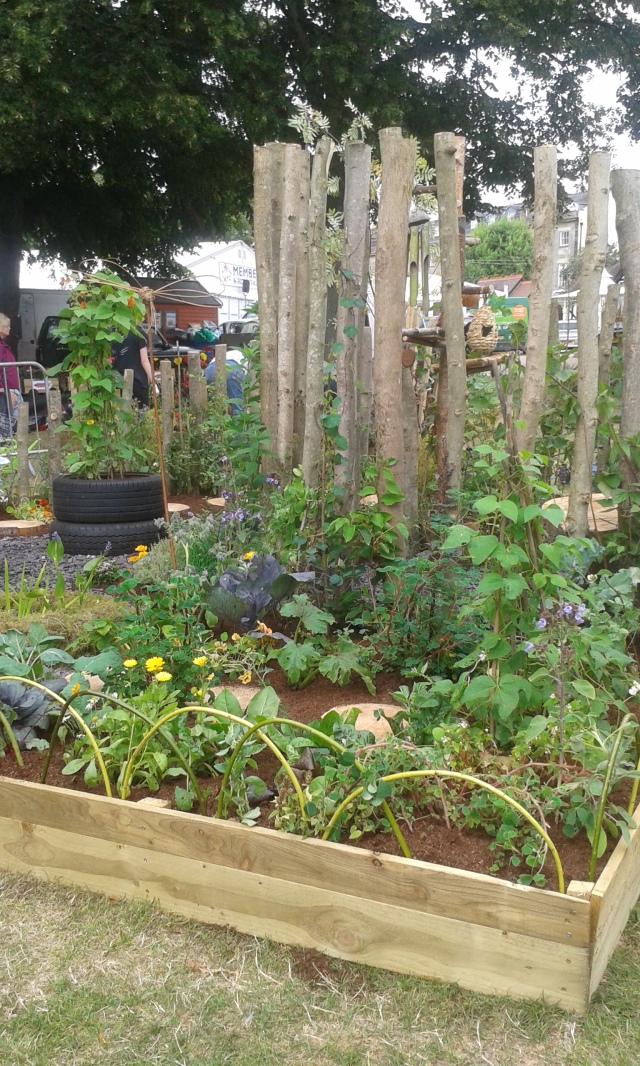

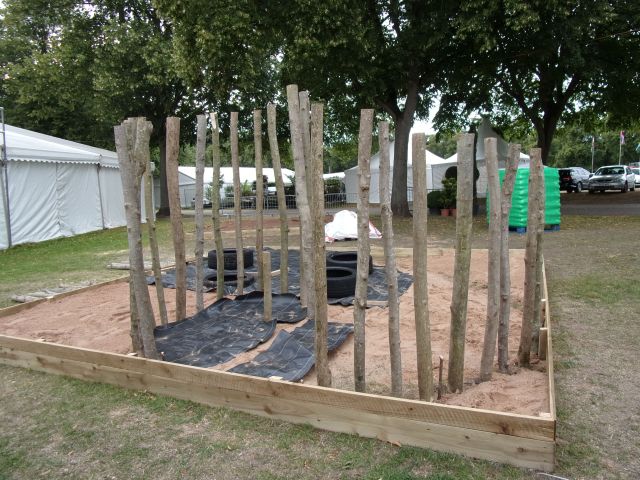
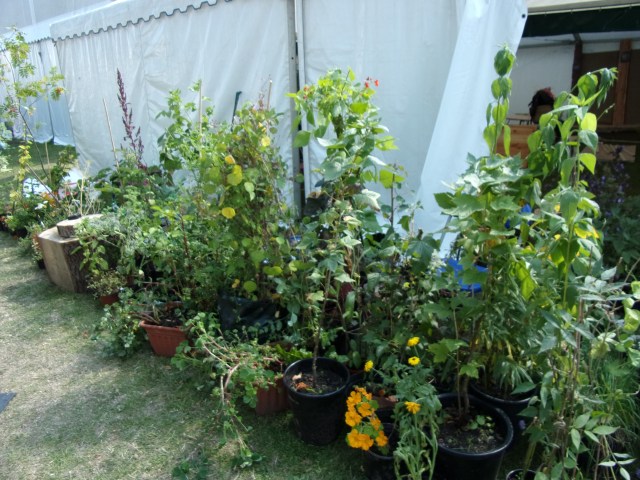
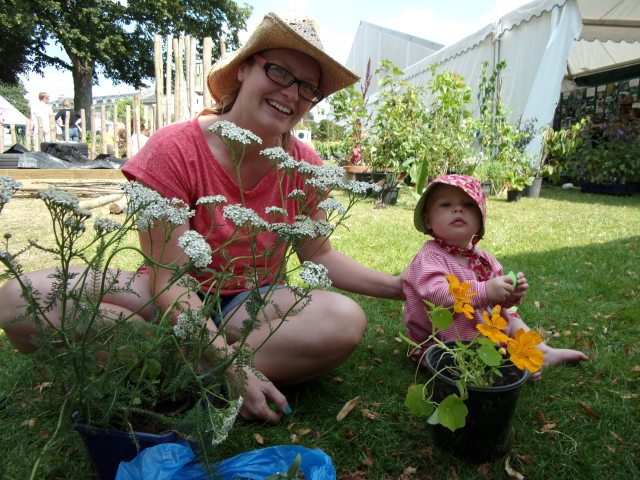
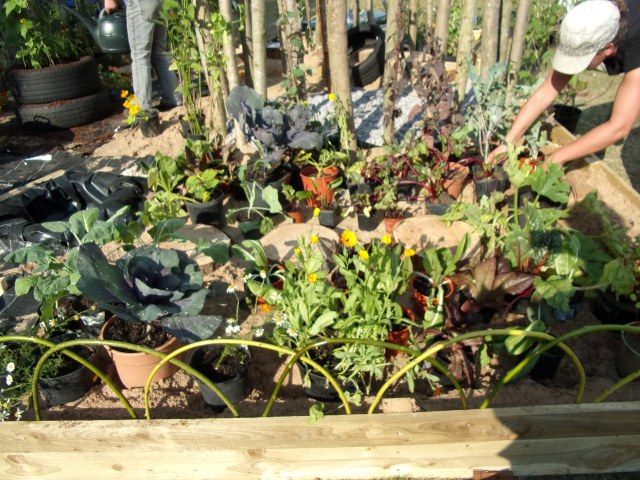
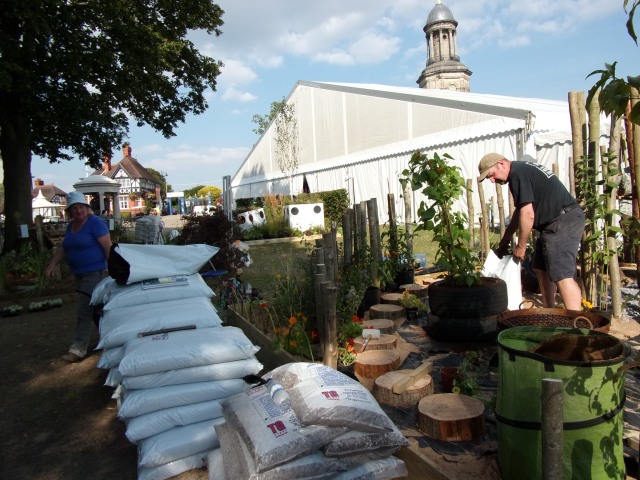
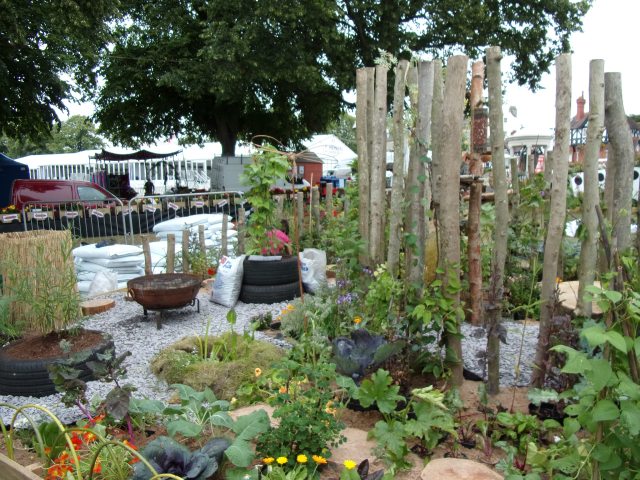
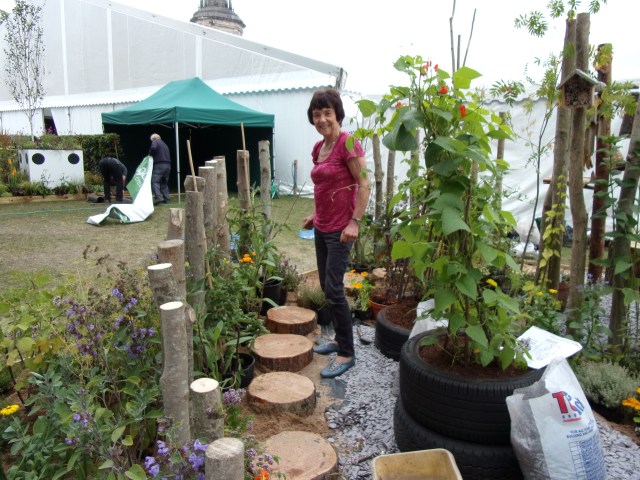

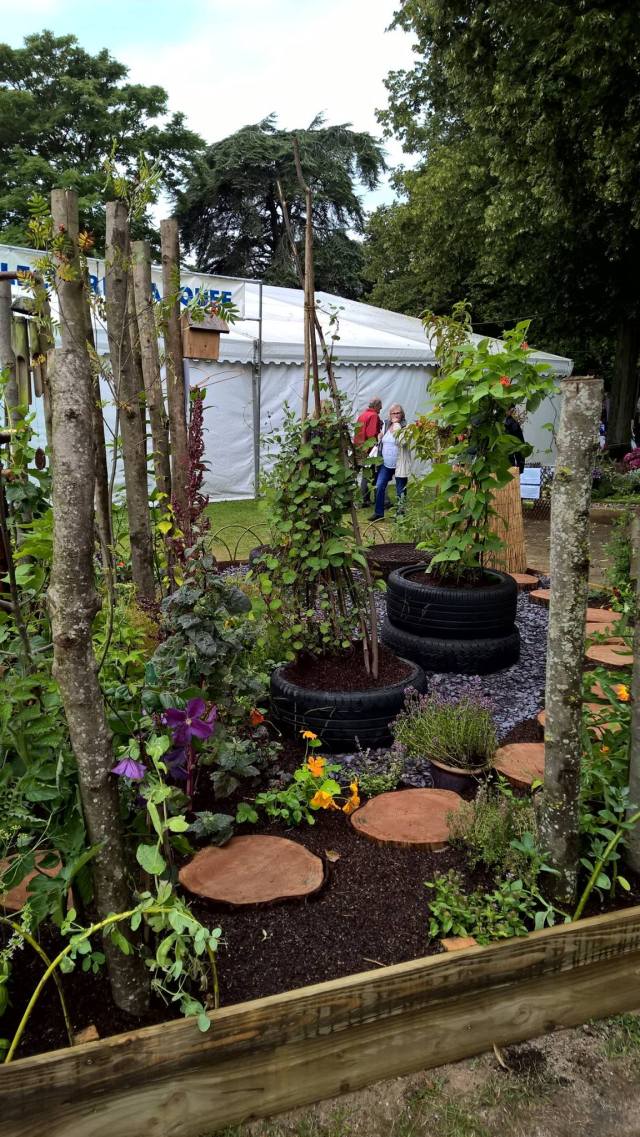
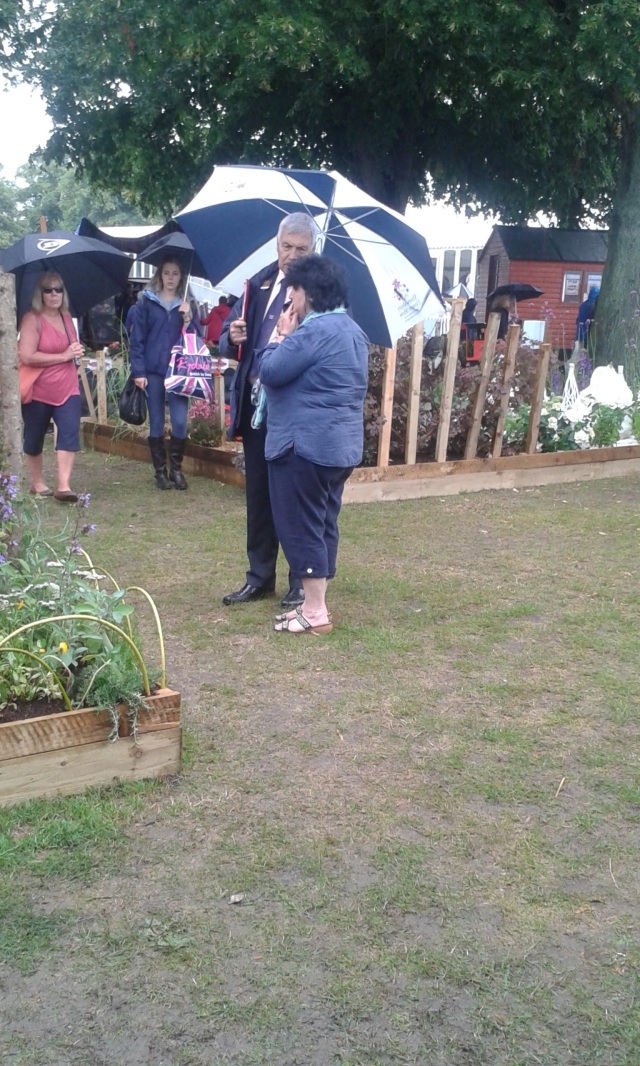
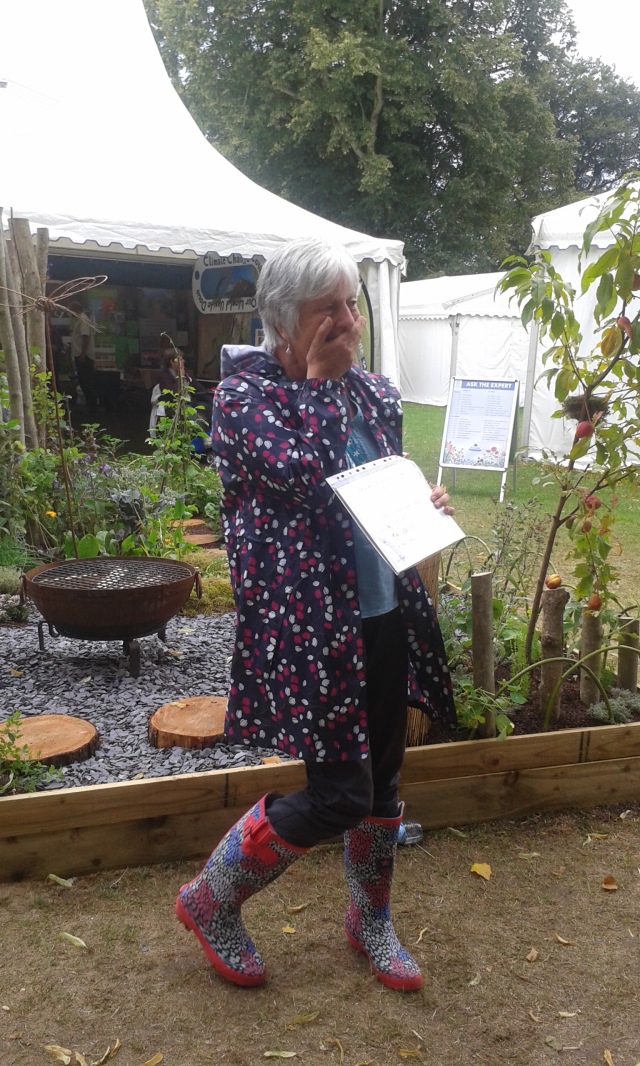
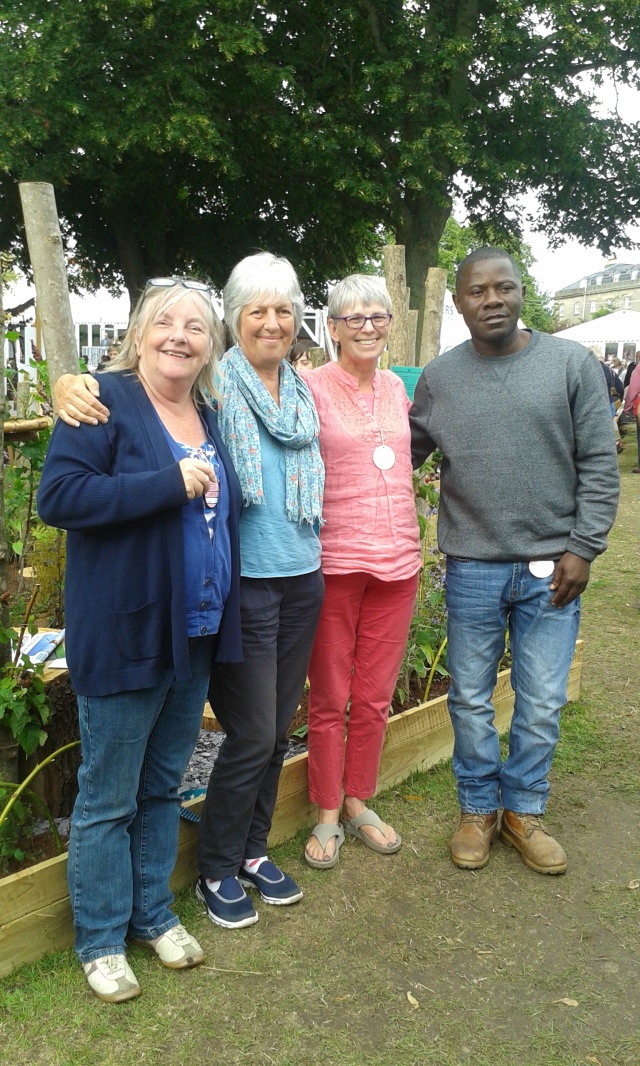
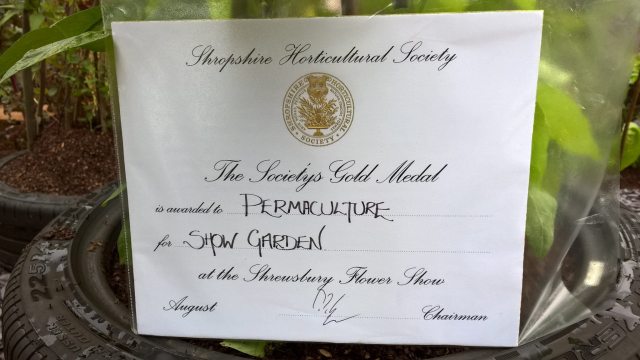
Anni & co that was brilliant. I’m delighted to be following up such work with Anni in the National Forest Garden Scheme.
LikeLiked by 1 person
Pingback: Shrewsbury Flower Show 2016 — Anni’s veggies – in pictures | Anni's perennial veggies
Excellent – well done!
LikeLike
Pingback: Gold Medal for Permaculture Working with Nature Garden | Anni’s perennial veggies | WORLD ORGANIC NEWS